★★★
“Not-so silent night”
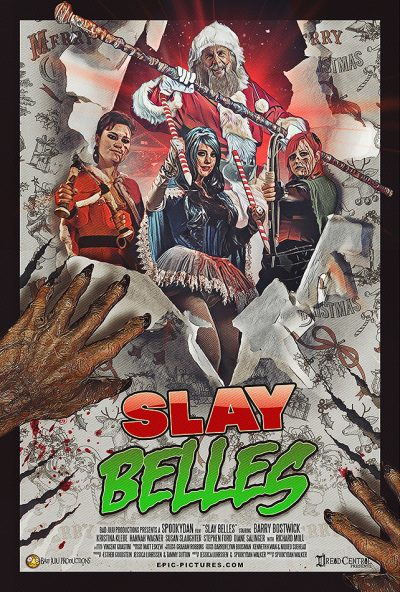 Not to be confused with RuPaul’s 2015 album (I kid you not), this starts off on shaky territory. I mean, a director who credits himself as “Spooky Dan Walker”, and three edgeladies as heroines, wannabe YouTube stars who think dropping F-bombs every second sentence is cool? I was thanking my lucky stars this had a running time of 76 minutes. This trio of urban explorers head off to an abandoned theme park in the middle of nowhere called Santa Land, only to find it not as abandoned as expected, with a giant horned monster, Grampus, roaming the area, operating as the devil’s Christmas ambassador to naughty children. Or adults, which is where Alexi (Klebe), Dahlia (Slaughter) and Sadie (Wagner) come on to its menu. Fortunately, Santa Land’s owner is there to help: who else but Mr. Claus (Bostwick) himself?
Not to be confused with RuPaul’s 2015 album (I kid you not), this starts off on shaky territory. I mean, a director who credits himself as “Spooky Dan Walker”, and three edgeladies as heroines, wannabe YouTube stars who think dropping F-bombs every second sentence is cool? I was thanking my lucky stars this had a running time of 76 minutes. This trio of urban explorers head off to an abandoned theme park in the middle of nowhere called Santa Land, only to find it not as abandoned as expected, with a giant horned monster, Grampus, roaming the area, operating as the devil’s Christmas ambassador to naughty children. Or adults, which is where Alexi (Klebe), Dahlia (Slaughter) and Sadie (Wagner) come on to its menu. Fortunately, Santa Land’s owner is there to help: who else but Mr. Claus (Bostwick) himself?
And that’s really where the film becomes considerably more fun. Because it plays fast and loose with the whole mythology of Christmas, depicting Santa as a hard-drinking, cursing biker who gave up the business because toys started being mass-produced. It’s a winning performance from Bostwick, who hand-waves away the girls’ questions about how he operated with increasingly irritated dismissals of “Magic!” This irascible charm seems to rub off on the heroines, who shift from irritating to endearing, and develop distinct personalities beyond their colour co-ordinated outfits and wigs, as they buckle down to fight Grampus and save… Well, less Christmas, and more the world in general.
It becomes increasingly self-aware as it goes on, poking as much fun at the world of Internet “celebrities” as endorsing it, e.g. the trio insist on taking selfies with the temporarily captured monster. There’s good support from Richard Moll as a local cop, and in particular, Diane Salinger as a local barmaid, who ends up playing a pivotal role, despite (or, more likely, because of) her clear aversion to the festive season. It all ends in a quite unexpected fashion which, if a bit too abrupt, fits nicely in with the slaying of sacred cows – or sleighing of sacred reindeer, perhaps – which has gone before. It certainly seals the three heroines as the pro-active leaders of the film, despite a shaky section in the middle where it looked like a boyfriend was going to end up saving the day. Not so fast, white knight…
I have to say, the Grampus suit itself is incredibly well done, a latex marvel that must have been hell to apply and perform in. While there are some elements which feel under-developed, such as the Ghoulies-like fur-balls which attack in act three, Walker keeps things moving at a brisk enough pace to get away with it most of the time. If not quite the silliest festive film which I’ve seen this year (that would, of course, be Santa Jaws), this deserves to be filed alongside other anti-Christmas movies, such as Gremlins. It’s no Die Hard, of course; then again, who is?
Dir: Dan Walker
Star: Kristina Klebe, Susan Slaughter, Hannah Wagner, Barry Bostwick





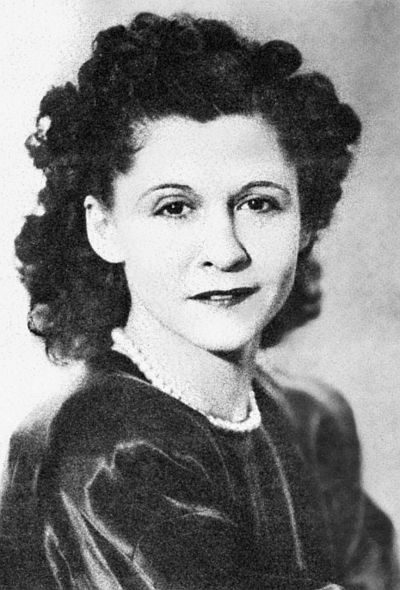 In September 1941, the author returns to Manila, the capital of the Philippines, starting work as a nightclub singer and falls in love with American GI, John Phillips. Which is unfortunate timing, because soon after, the Japanese bomb Pearl Harbor, kicking off the war in the Pacific. A hasty marriage to John follows on Christmas Eve, but Japan invades, and Claire’s husband becomes a prisoner of war. Left to fend for herself, after a period spent hiding out in the countryside, she returns to Manila, adopting the persona of Dorothy Fuentes, born in the Philippines of Italian parents. In order to help the resistance, she opens a venue, Club Tsubaki, aimed at officers of the occupying forces.
In September 1941, the author returns to Manila, the capital of the Philippines, starting work as a nightclub singer and falls in love with American GI, John Phillips. Which is unfortunate timing, because soon after, the Japanese bomb Pearl Harbor, kicking off the war in the Pacific. A hasty marriage to John follows on Christmas Eve, but Japan invades, and Claire’s husband becomes a prisoner of war. Left to fend for herself, after a period spent hiding out in the countryside, she returns to Manila, adopting the persona of Dorothy Fuentes, born in the Philippines of Italian parents. In order to help the resistance, she opens a venue, Club Tsubaki, aimed at officers of the occupying forces.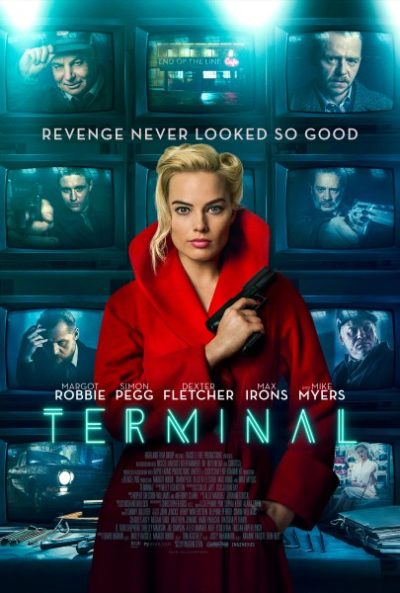 Oozing with a unique visual style that’s like a brutalist cross between Blade Runner and Alice in Wonderland, this focuses on a battle for business between assassins. Annie (Robbie) – or, maybe, she’s called Bonnie – wants to take over the murderous commissions of the mysterious Mr. Franklin. He agrees, only if she takes out the current incumbents, Vince (Fletcher) and his apprentice, Alfred (Irons). Simultaneously, while working as a waitress in an all-night diner at a railway station, she meets Bill (Pegg), a terminally-ill English teacher, who enters her establishment while waiting for a train in front of which to throw himself.
Oozing with a unique visual style that’s like a brutalist cross between Blade Runner and Alice in Wonderland, this focuses on a battle for business between assassins. Annie (Robbie) – or, maybe, she’s called Bonnie – wants to take over the murderous commissions of the mysterious Mr. Franklin. He agrees, only if she takes out the current incumbents, Vince (Fletcher) and his apprentice, Alfred (Irons). Simultaneously, while working as a waitress in an all-night diner at a railway station, she meets Bill (Pegg), a terminally-ill English teacher, who enters her establishment while waiting for a train in front of which to throw himself.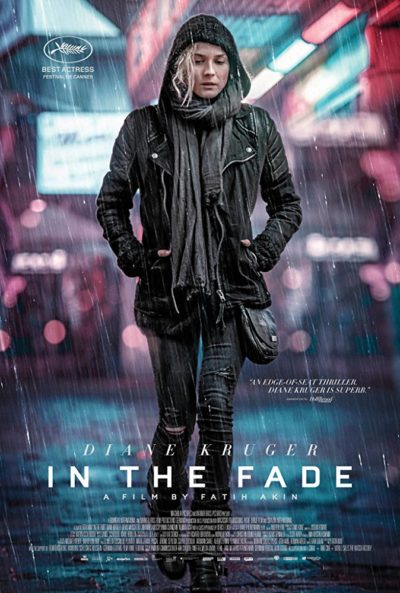 I spent most of the movie going back and forth as to whether or not this qualified for inclusion here. Was its lead, perhaps, just
I spent most of the movie going back and forth as to whether or not this qualified for inclusion here. Was its lead, perhaps, just 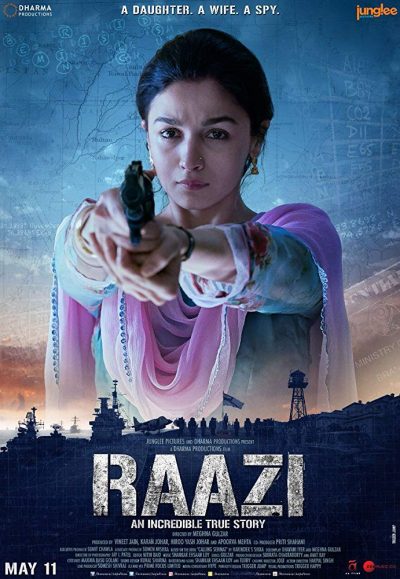
 This Indian spy thriller manages to be both remarkably restrained and human, avoiding a potentially jingoistic approach, and going for something considerably more measured. It takes place just before the war between India and Pakistan in 1971, when Indian agent Hidayat Khan is pretending to give information to Pakistan. In order to get close to their top brass, he convinces his daughter, Sehmat (Bhatt), to enter an arranged marriage to Iqbal Syed (Ahlawat), an officer whose father (Sharma) is a Brigadier in the Pakistani army. After being trained by senior intelligence officer Khalid Mir (Kaushal), she goes to join her new husband, and begins operations as a spy inside the Brigadier’s household.
This Indian spy thriller manages to be both remarkably restrained and human, avoiding a potentially jingoistic approach, and going for something considerably more measured. It takes place just before the war between India and Pakistan in 1971, when Indian agent Hidayat Khan is pretending to give information to Pakistan. In order to get close to their top brass, he convinces his daughter, Sehmat (Bhatt), to enter an arranged marriage to Iqbal Syed (Ahlawat), an officer whose father (Sharma) is a Brigadier in the Pakistani army. After being trained by senior intelligence officer Khalid Mir (Kaushal), she goes to join her new husband, and begins operations as a spy inside the Brigadier’s household. Playing like a more social media-conscious version of Heathers, the central characters are high school girls McKayla (Shipp) and Sadie (Hildebrand). They believe their town of Rosedale is the hunting territory of a serial killer, whom the police won’t acknowledge, and the girls have a (not very successful) blog, Tragedy Girls, about the case. The pair succeed in luring out and capturing the killer (Durand), and discover that if they continue operating in his name, they and their site experiences a rise in popularity.
Playing like a more social media-conscious version of Heathers, the central characters are high school girls McKayla (Shipp) and Sadie (Hildebrand). They believe their town of Rosedale is the hunting territory of a serial killer, whom the police won’t acknowledge, and the girls have a (not very successful) blog, Tragedy Girls, about the case. The pair succeed in luring out and capturing the killer (Durand), and discover that if they continue operating in his name, they and their site experiences a rise in popularity. briskly functional rather than particularly memorable: by which I mean, I read the book in fairly short order… only to discover, when I finished it, that I didn’t remember very much about it. Not even the heroine’s name. Mallory? Mindy? Miley? Definitely an M word… Ah, yes: Melody Cale. She’s an agent for the Geirty Solutional Diversity Group, a murky government organization – also known as the Get Shit Done Group – who “do what the CIA couldn’t… without having politicians, or reporters, looking over their shoulders.”
briskly functional rather than particularly memorable: by which I mean, I read the book in fairly short order… only to discover, when I finished it, that I didn’t remember very much about it. Not even the heroine’s name. Mallory? Mindy? Miley? Definitely an M word… Ah, yes: Melody Cale. She’s an agent for the Geirty Solutional Diversity Group, a murky government organization – also known as the Get Shit Done Group – who “do what the CIA couldn’t… without having politicians, or reporters, looking over their shoulders.”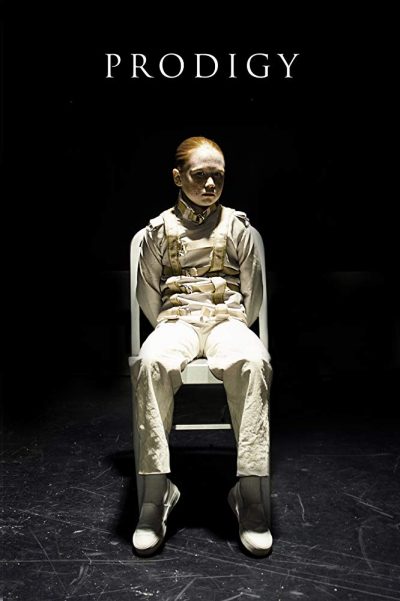 This small-scale production – a cast of little more than half a dozen, and one location, not counting the park scenes which bookend it – packs a wallop significantly above its weight. Psychiatrist Jimmy Fonda (Neil) is brought into a military facility by an old friend, Olivia (Andersen), to interview a young girl, Ellie (Liles), who is being held there. To avoid pre-judging her case, Fonda deliberately avoids reading the documentation about her with which he has been provided. But the stringent security precautions (“In the event the subject escapes the restraints, drop to the floor and cover your head”) under which she’s held, should give him a clue that this is far from a normal nine-year-old. If it didn’t, the conversation with her which follows certainly does.
This small-scale production – a cast of little more than half a dozen, and one location, not counting the park scenes which bookend it – packs a wallop significantly above its weight. Psychiatrist Jimmy Fonda (Neil) is brought into a military facility by an old friend, Olivia (Andersen), to interview a young girl, Ellie (Liles), who is being held there. To avoid pre-judging her case, Fonda deliberately avoids reading the documentation about her with which he has been provided. But the stringent security precautions (“In the event the subject escapes the restraints, drop to the floor and cover your head”) under which she’s held, should give him a clue that this is far from a normal nine-year-old. If it didn’t, the conversation with her which follows certainly does.



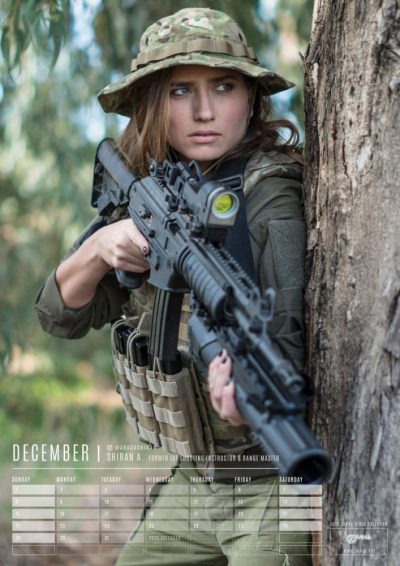



 I’m tempted to award this an extra half-star, simply for pissing off liberal film critics, upset by the fact that most of the film is devoted to a white woman killing Latino drug dealers. Of course, they completely miss all the points, instead complaining – and these are direct quotes – there is “not a word about corporate complicity in the opioid crisis” and that the heroine’s “true enemy is a system of income inequality driven by hyper-capitalism.” Because, of course, if was hyper-capitalism which gunned down the husband and daughter of Riley North (Garner) in the parking lot of a fun-fair. Oh, my mistake: it was Latino drug dealers.
I’m tempted to award this an extra half-star, simply for pissing off liberal film critics, upset by the fact that most of the film is devoted to a white woman killing Latino drug dealers. Of course, they completely miss all the points, instead complaining – and these are direct quotes – there is “not a word about corporate complicity in the opioid crisis” and that the heroine’s “true enemy is a system of income inequality driven by hyper-capitalism.” Because, of course, if was hyper-capitalism which gunned down the husband and daughter of Riley North (Garner) in the parking lot of a fun-fair. Oh, my mistake: it was Latino drug dealers.